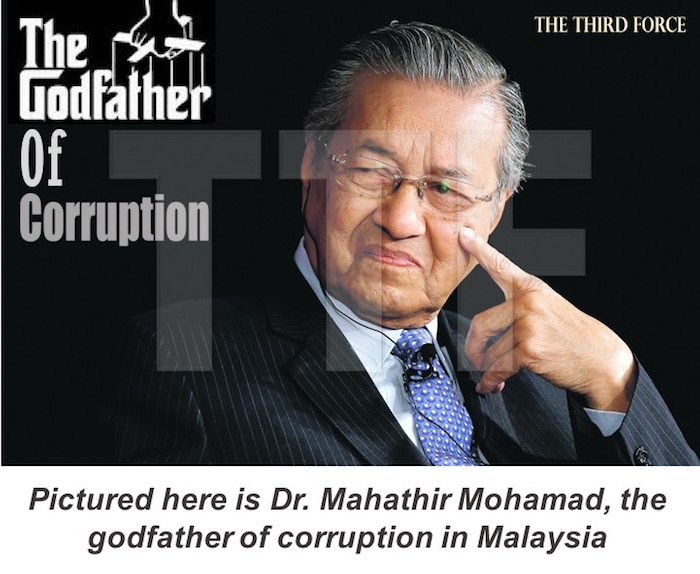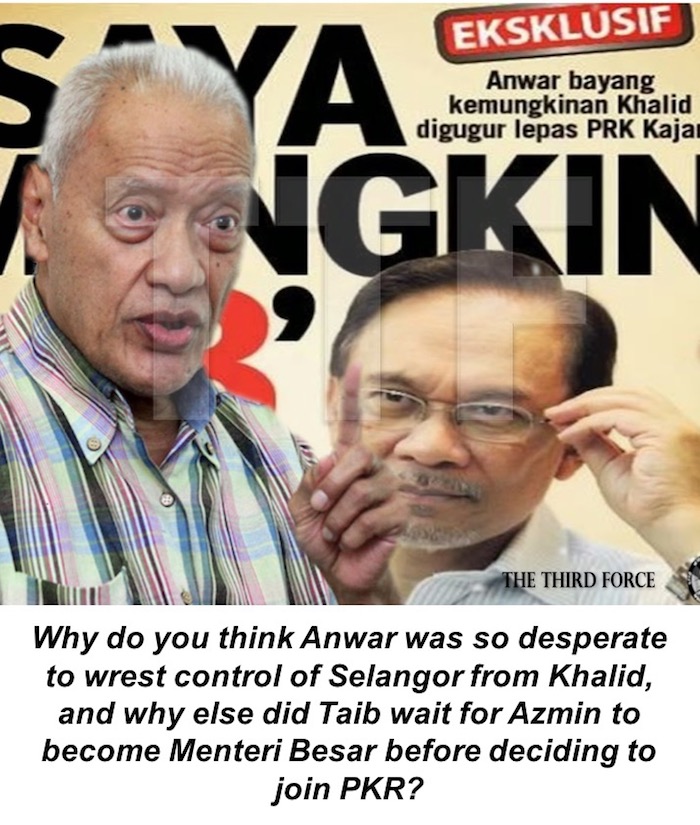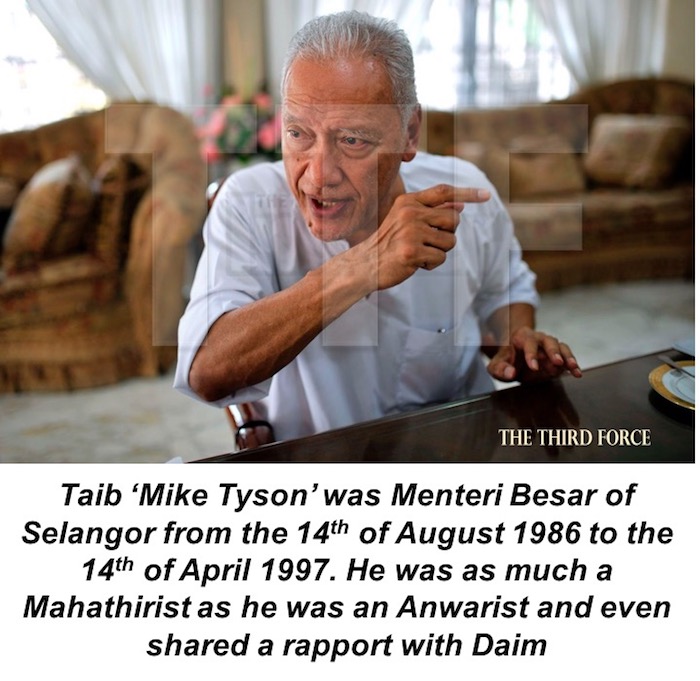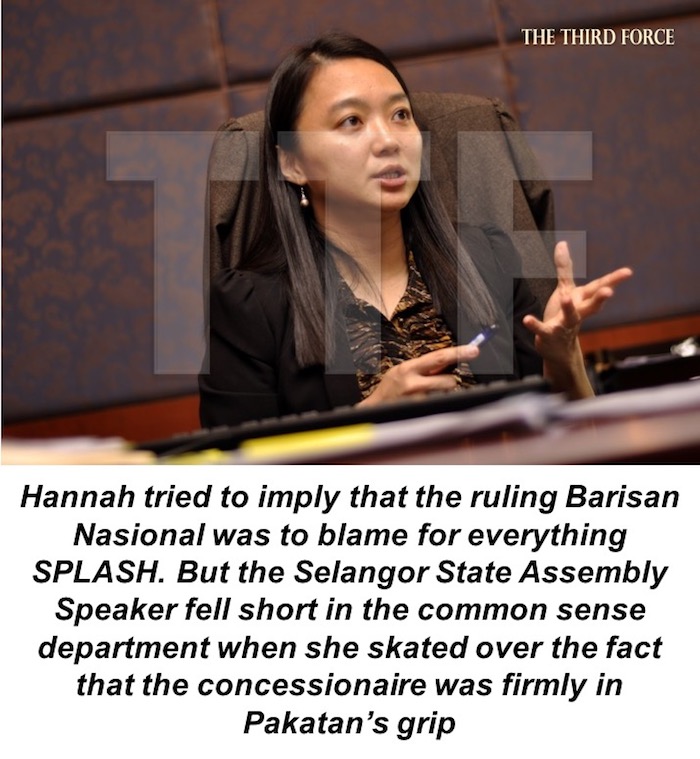“It tells you that SPLASH is controlled by a Tan Sri who is as much a Mahathirist as he is an Anwarist. Then, you have the guys at KPSB who are controlled one way or the other by Dato’ Seri Azmin Ali via Menteri Besar Selangor (Incorporated), the state’s asset management company. Factor all this together, and you have sufficient grounds to reason that SPLASH is 60 percent Pakatan Harapan ‘controlled’ and not a ‘Barisan Nasional entity’ as Hannah Yeoh would have you believe”
THE THIRD FORCE

The Selangor Water Crisis is nothing but a monument of Dr Mahathir Mohamad’s failure, one among the many he erected during his 44-year stint with government. In 1983, just two years after being sworn in as Prime Minister, the onetime Kubang Pasu Member of Parliament (MP) announced a decision by the Government of Malaysia (GoM) to reduce the level and scope of its spending by privatising public enterprises. At first glance, the policy seemed consistent with the global wave of conservative market reforms that began in the Thatcher government in 1979 and reverberated towards the Regan administration the following year.
However, the move turned out to be a complete digression from the initiatives Dato’ Seri Najib Tun Razak’s late father, Tun Abdul Razak, had put in place in the seventies. Accordingly, the nation’s second premier had intended to eliminate race identification through economic function by spurring reform on a cross-cultural platform. But Mahathir preferred to let a handful of cash-rich capitalists do the thinking for him instead. These capitalists went on to sink their teeth into the privatization pie through deals both the former premier and Daim Zainuddin would regularly negotiate in their smoke-filled conspiracy rooms.
One of these deals ended with the fragmentation of the Selangor water industry. Towards the mid-nineties, Mahathir decided to privatise the profitable water treatment service by awarding contracts to three crony-centric concerns that were ill-capacitated to participate in the industry. One of these concerns, Puncak Niaga Sdn Bhd (PNSB), had on board a majority shareholder who served both as Tan Sri Muhammad Muhammad Taib’s proxy and informant in the company. The remaining two entities were intertwined at very obscure levels via proxy and nominee concerns that were either linked to Daim or Dato’ Seri Anwar Ibrahim.

Both Taib and Anwar had vested interests in the Selangor water industry and needed to make absolutely sure the consolidation exercise Tan Sri Abdul Khalid Ibrahim was pursuing would fall flat on its ass. Prior to privatisation, water works in Selangor was handled by Jabatan Bekalan Air Selangor (JBAS), a state-owned entity that raked in a handsome RM50 million to RM80 million on a yearly basis. By the time Anwar succeeded Daim as Minister of Finance, Taib, who was then the Menteri Besar of Selangor, had arranged for PNSB to be awarded a 25-year concession to take over and refurbish 27 water treatment plants in Selangor.

The concession award was subsequently made public on the 22nd of September 1994. To quell public anxiety, a couple of Taib’s men insisted that the move would increase the state’s water supply efficiency given the ‘professional’ expertise PNSB could impart. That triggered a wave of scathing criticisms when it was ‘disclosed’ that the proxy concern had little or no prior experience in the water industry. To calm things down, Mahathir stepped in some days later by telling reporters that the move was meant to free the state government of technical responsibilities and allow it to focus on policy oriented issues instead.
Days then passed into weeks, and weeks, months. The PNSB award was almost totally forgotten save for some discussions here and there that members of the opposition kept alive. Then, when Mahathir was sure things were under control, he got Taib to contract a further 25 years to PNSB to build and operate phase two of the Sungai Selangor Water Supply Scheme. By then, the opposition was dead sure that the former premier was in cahoots with both Anwar and Taib to adjust Selangor’s faucets in ways that channeled opportunity and wealth to them and their cronies.
And it didn’t stop there.
On the 1st of January 2001, Syarikat Pengeluaran Air Sungai Selangor Sdn Bhd (SPLASH) became the second concessionaire to enter the scene by bagging a 30-year contract to maintain the Sungai Selangor Dam. The company was 40 percent Gamuda Berhad owned while the remaining 60 percent of its shares were split between Kumpulan Perangsang Selangor Berhad (KPSB) and Tan Sri Wan Azmi Wan Hamzah. Wan Azmi was (and still is) a well known associate of Daim Zainuddin and is someone who shares a rapport of sorts with both Anwar and his wife.
Now, what does this tell you?
Well, it tells you that SPLASH is controlled by a Tan Sri who is as much a Mahathirist as he is an Anwarist. Then, you have the guys at KPSB who are controlled one way or the other by Dato’ Seri Azmin Ali via Menteri Besar Selangor (Incorporated), the state’s asset management company. Factor all this together, and you have sufficient grounds to reason that SPLASH is 60 percent Pakatan Harapan ‘controlled’ and not a ‘Barisan Nasional entity’ as Hannah Yeoh would have you believe.

But never mind that retard.
On the 1st of January 2002, Mahathir roped Konsortium Abass Sdn Bhd into the picture by granting it a 30-year contract to operate and maintain the Semenyih Dam. Back then, Abass was shared almost equally between the state of Selangor and Titisan Modal Sdn Bhd, a company with deep rooted ties to some of Mahathir’s staunchest associates. While all this took place, the onetime profitable JBAS – which, by then, had been corporatized into Perbadanan Urus Air Selangor Berhad (PUAS) – ran into the red as it struggled to recover costs associated with the purchase of treated water from the concessionaires. But what did Mahathir do about it?
Nothing. Absolutely nothing.
To be continued…



No comments:
Post a Comment
Note: Only a member of this blog may post a comment.